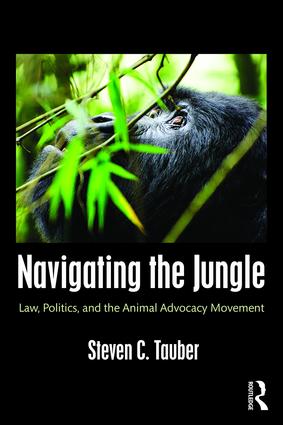Results
Displaying 6021 - 6030 of 6638
| Title | Citation | Alternate Citation | Agency Citation | Summary | Type |
|---|---|---|---|---|---|
| Finland - Animal Welfare Act | (247/1996, amendments up to 1430/2006 included) | The objective of the Finnish Animal Welfare Act is to protect animals from distress, pain and suffering in the best possible way. Another objective is to promote the welfare and good treatment of animals. In meeting these objectives, the Act prohibits inflicting undue pain and distress on animals; what is considered undue pain and distress is discussed by decree. The act also contains special provisions concerning hunting, keeping wild animals in zoos, fishing, veterinary medication, animal breeding, artificial propagation of animals, animal testing on vertebrates, animal transportation, gene technology and nature conservation. | Statute | ||
| MI - Hunting - Chapter 324. Natural Resources and Environmental Protection Act. | M.C.L.A. 324.40112 | MI ST 324.40112 | This law makes it a crime to interfere or obstruct someone in the lawful taking of animals. | Statute | |
| FL - Department of Agriculture & Consumer Services - Animal Disease Control | West's F. S. A. § 585.01 - 585.69 | FL ST § 585.01 - 585.69 | This set of laws addresses the role of the Department of Agriculture & Consumer Services, Division of Animal Industry in the prevention, control, or eradication of any contagious, infectious, or communicable disease among domestic or wild animals. The Department is authorized to regulate the importation, transportation, transfer of ownership, and maintenance of animals; establish quarantine areas; and inspect, test, treat, condemn, and destroy animals and animal housing facilities as necessary for the eradication of communicable diseases or the detection of harmful biological and chemical residues in food animals. The laws also direct the Department to develop a list of dangerous transmissible diseases. All veterinarians and animal owners are required to report suspected and confirmed cases of dangerous transmissible diseases to the State Veterinarian; failure to do so is a felony of the second degree. | Statute | |
| Butcher v. Gay | 34 Cal.Rptr.2d 771 (Cal.App.5.Dist.) | 29 Cal.App.4th 388 (Cal.App.5.Dist.) |
Plaintiff alleged that she had contracted Lyme disease "as a result of exposure to infested ticks" on respondent's property, and that respondent had "failed to spray the area, post signs or prevented [sic] domestic dog(s) from coming into contact with the plaintiff - jumping in her lap - thereby exposing her to a vector of the disease without her knowledge. Court found no duty toward the plaintiff and allow the motion for summary judgment against the plaintiff to stand. |
Case | |
| Navigating the Jungle |
|
Policy | |||
| MD - Veterinarian Issues - Reporting Animal Cruelty | MD ADC 15.14.15.01 to MD ADC 15.14.15.9999 | COMAR 15.14.15.01 to COMAR 15.14.15.9999 | These regulations state that if a veterinarian suspects animal cruelty, the veterinarian should do the following: (1) Note the condition of the animal upon presentation in the animal's treatment record; (2) Note the basis for suspecting cruelty in the animal's treatment record; and (3) Promptly report the suspected instance of cruelty, including animal fighting, to the appropriate local law enforcement or county animal control agency. A veterinarian who reports, in good faith, a suspected incident of animal cruelty is immune from any civil liability that results from this report. | Administrative | |
| KS - Hunting - Unlawful Acts. 32-1014. Obstruction or impeding of lawful activities | K. S. A. 32-1014 | KS ST 32-1014 | This Kansas law reflects the state's hunter harassment provision. Under the law, no person shall willfully obstruct or impede the participation of any individual in the lawful activity of hunting, furharvesting or fishing. The law does not apply to law enforcement and does not limit the right of landowners or their tenants to limit trespass. | Statute | |
| CT - Spay and Neuter - Chapter 436A. Animal Population Control | C. G. S. A. § 22-380a to 380m | CT ST §§ 22-380a to 380m | This set of Connecticut laws provides the state's dog and cat sterilization laws. Under the section, no pound is allowed to sell or give away any unspayed or unneutered dog or cat to any person unless such pound receives $45 from the person buying or adopting such dog or cat. These funds are paid quarterly by the municipality into the animal population control account established under section 22-380g. At the time of receipt of such payment, the pound shall provide a voucher, for the purpose of sterilization and vaccination benefits to the person buying or adopting such dog or cat. The chapter also provides the procedure for a veterinarian to participate in the program and the method by which he or she would be paid. Further, the law states that a town clerk may collect an additional $6 for each license issued pursuant to section 22-338 for an unspayed or unneutered dog. | Statute | |
| US - Pets and Housing - Subpart G. Pet Ownership in Public Housing. | 24 C.F.R. § 960.701 to .707 | The purpose of this subpart is, in accordance with section 31 of the United States Housing Act of 1937 (42 U.S.C. 1437z-3), to permit pet ownership by residents of public housing, subject to compliance with reasonable requirements established by the public housing agency (PHA) for pet ownership. | Administrative | ||
| Soldal v. County of Cook | 506 US 56 (1992) |
Fourth Amendment protections apply regardless of the specific reasons for why a seizure may have occurred. |
Case |
